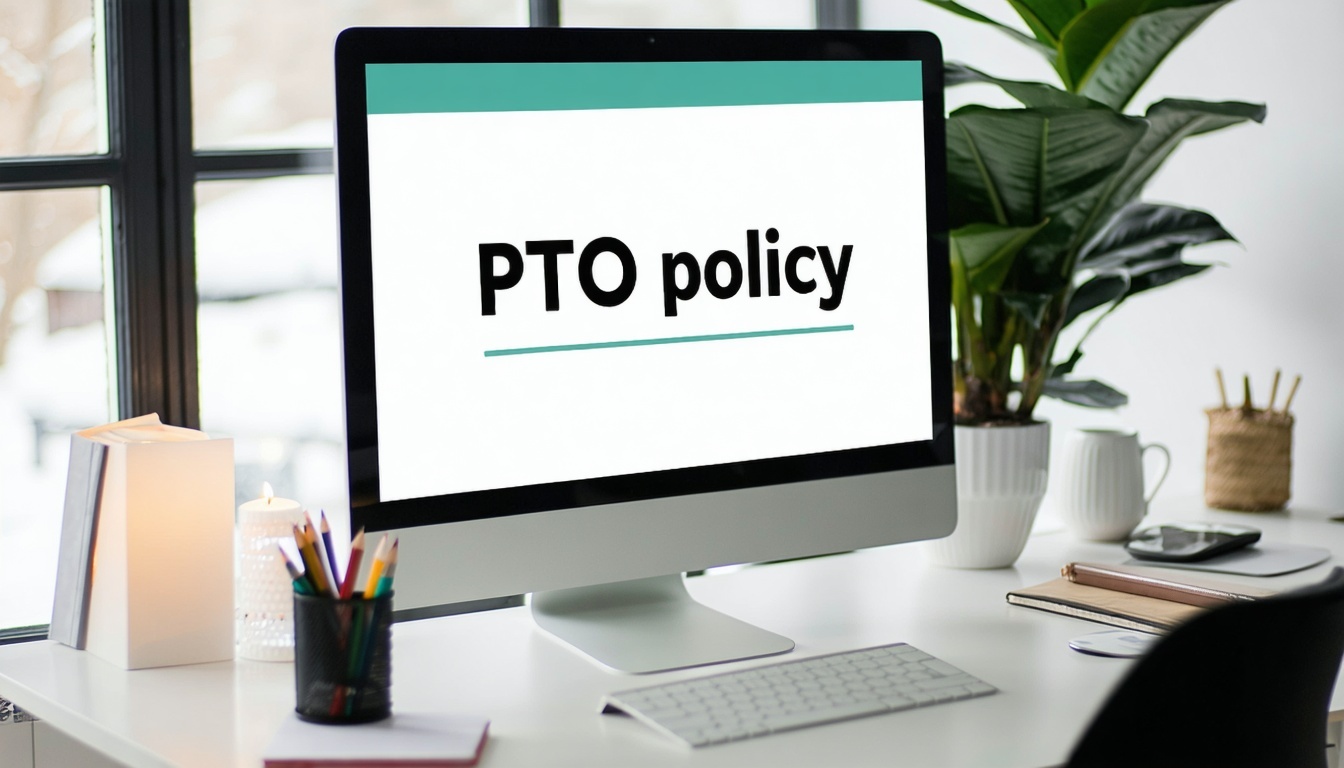Workforce Engagement and Why It’s the Key to Organisational Success
Workforce engagement goes beyond feel-good initiatives and coffee catchups. It’s about creating a workplace where employees are genuinely connected...
Become the expert on delivering
valid and fair assessments for
your training and education.
Hire
|
Engage
|
Develop
|
|
Automatically match to candidates who are a great fit for your team culture and who are intrinsically motivated to succeed. |
Deeply understand your organisation with science-backed analytics on your culture, team design, and engagement. |
Back your onboarding, compliance and skill development with industry-leading credentialling, competency and capability expertise.
|
.png?width=383&height=200&name=team%20(1).png)
13 min read
 Compono
Jul 1, 2025 10:44:19 AM
Compono
Jul 1, 2025 10:44:19 AM

Every organisation has a workplace culture—the question is whether it’s working for you or against you. Workplace culture is often referred to as 'corporate culture' or 'organisational culture', both of which describe the shared values, beliefs, and practices that define how a company operates. Strong workplace culture isn’t just a nice-to-have; it’s a measurable driver of business success that can make or break your organisation’s performance.
Here’s something that might surprise you: a positive workplace culture, or a strong company's culture, drives 94% of executive strategic priorities and determines 88% of employee satisfaction. A well-defined culture is directly linked to a company's success, influencing everything from employee engagement to retention and overall organisational outcomes. Yet many organisations still treat culture as a fluffy afterthought rather than the strategic asset it actually is.
The reality is that workplace culture refers to much more than ping-pong tables and free coffee. It’s the collective set of values, beliefs, attitudes, and behaviours that shape how work gets done and how people interact within your organisation. There are different types of company cultures—such as adhocracy, clan, and hierarchy cultures—that can significantly shape the work environment and management styles. When done right, it becomes your competitive advantage. When neglected, it can quietly undermine even your best strategies.
Let’s explore how to build and sustain a workplace culture that drives real business results.
Workplace culture encompasses the shared values, beliefs, attitudes, behaviours, and employee interactions that define how work gets done in your organisation. Think of it as your company’s personality—it influences everything from daily interactions to major strategic decisions.
Culture manifests in both visible and invisible ways. You can see it in communication styles, meeting dynamics, and how people dress. But the deeper elements—like unwritten rules, assumptions about what success looks like, and how conflicts get resolved—often have the biggest impact on employee experience and business outcomes.
Strong workplace culture aligns employee actions with your organisation’s mission and strategic objectives. The organisation's culture shapes this alignment by fostering a unified sense of purpose where people understand not just what they’re doing, but why it matters. This alignment is what transforms a group of individuals into a high-performing team.
Culture influences everything from hiring practices to performance evaluations and employee retention. It determines whether employees feel respected and valued, or whether they’re counting down the minutes until they can leave. The difference between these two scenarios has massive implications for your bottom line.
Let’s talk numbers, because the business case for positive company culture is compelling. Companies with healthy cultures see 2.3 times higher revenue growth compared to those with weak cultures. That’s not a small difference—that’s the kind of competitive advantage that separates market leaders from the rest and directly influences an organisation's success.
Positive workplace culture reduces turnover costs by up to 40% while significantly increasing employee engagement. A good workplace culture is built on shared values, supportive norms, and a healthy, enjoyable work atmosphere that fosters meaning and satisfaction. When you consider that replacing a single employee can cost anywhere from 50% to 200% of their annual salary, the retention benefits alone justify investing in culture.
But it goes beyond just keeping people. Engaged employees in positive cultures are 31% more productive and deliver 37% stronger sales performance. Trust-based environments achieve 76% higher engagement scores, and flexible work cultures report 21% higher profitability with a 41% reduction in absenteeism.
Culture directly impacts customer satisfaction, innovation capacity, and your competitive advantage in the marketplace. When team members feel connected to your company’s mission and values, they’re more likely to go above and beyond for customers and contribute innovative ideas that drive growth.
Here’s a statistic that should get every hiring manager’s attention: 35% of job seekers would decline offers from companies with poor cultural fit, even with higher salaries. In today’s competitive talent market, a toxic workplace culture is a liability you can’t afford, often resulting in increased employee turnover and making it harder to retain top talent.
On the flip side, employees stay 50% longer at companies where they feel culturally aligned and valued. Strong onboarding programs that emphasise culture reduce first-year turnover by 25%. When you get cultural alignment right from the start, you’re setting the foundation for long-term employee retention.
Organisations with positive cultures attract top talent 70% more effectively than competitors. Word travels fast in professional networks, and your company’s culture reputation precedes you. A great company culture becomes a powerful recruitment tool that helps you attract and retain the best people in your industry.
An employee recognition program and cultural alignment boost retention rates among high-performing employees—exactly the people you can least afford to lose. When your best performers feel valued and see a future with your organisation, they become culture champions who help attract even more great talent.
The link between positive work environment and productivity isn’t just intuitive—it’s backed by solid data. Psychological safety enables employees to contribute ideas freely, leading to 67% more innovative solutions. When people aren’t worried about being blamed for mistakes, they’re more likely to take calculated risks that drive innovation.
Flexible work cultures understand that employee well being directly impacts performance. Companies that prioritise work life balance see measurable improvements in both mental and physical health outcomes, which translate to higher productivity and lower healthcare costs.
Open communication channels and transparent feedback create an environment where problems get solved quickly rather than festering. Helping employees connect with each other and the organisation's vision is essential for fostering engagement and productivity. This responsiveness helps organisations adapt faster to market changes and maintain their competitive edge.
Company values are the cornerstone of a positive workplace culture. They define what your organisation stands for and set the standard for how employees interact, make decisions, and approach their work. When company values are clearly articulated and authentically lived out, they foster a sense of unity and shared purpose among team members. Employees feel more connected to the organisation and understand how their daily actions contribute to broader business goals.
A positive company culture rooted in strong company values leads to higher employee satisfaction and retention. For example, when a company prioritises work life balance as a core value, it can implement flexible work arrangements and wellness initiatives that support both mental and physical health. This not only helps employees feel valued and respected, but also creates a positive workplace where people are motivated to do their best work. Ultimately, a values-driven approach strengthens the foundation for business success by aligning everyone around a common vision and set of expectations.
A positive workplace culture thrives when employees are aligned with the company’s mission. When team members understand how their roles contribute to the organisation’s overarching goals, they experience a greater sense of purpose and job satisfaction. This alignment is achieved through clear communication of the company’s mission and vision, as well as by involving employees in goal-setting and decision-making processes.
A mission-driven company culture encourages shared values and fosters a strong sense of community. Employees who see the impact of their work on the company’s mission are more likely to be engaged, motivated, and committed to organisational success. For instance, a company that champions innovation can empower employees to think creatively and pursue new ideas, leading to higher employee engagement and a more positive workplace. By connecting daily work to a larger purpose, organisations can cultivate a positive company culture that drives both individual fulfilment and collective achievement.
A strong code of ethics is essential for sustaining a positive workplace culture and preventing the emergence of toxic workplace culture. By providing clear guidelines for behaviour and decision-making, a code of ethics ensures that all employees are held to consistent standards, regardless of their role or seniority. This framework typically includes policies on diversity, inclusion, respect, and procedures for reporting unethical conduct.
When employees feel confident that ethical standards are upheld, mutual respect and trust flourish, creating a supportive work environment where open communication is encouraged. For example, a company that values transparency might implement an open-door policy, making it easy for employees to voice concerns or suggest improvements without fear of retaliation. By prioritising ethics, organisations foster a positive workplace where employees feel safe, respected, and empowered to contribute to the company’s success.
Building a positive culture isn’t about copying what works for other companies—it’s about identifying the elements that align with your organisation’s values and business objectives. However, certain foundational elements appear consistently in high-performing cultures, all contributing to a healthy culture as a key goal.
Trust and psychological safety form the bedrock where employees feel secure expressing ideas and concerns without fear of retribution. This means people can admit mistakes, ask questions, and propose alternative solutions without worrying about negative consequences. Leadership models vulnerability by acknowledging their own errors and learning opportunities, which encourages others to do the same.
Recognising culture employees—those who consistently embody positive values and contribute to a supportive environment—reinforces trust and motivates others to follow their example. For organisations seeking to deepen these values, prioritising a strong safety culture can further enhance trust, wellbeing, and positive behaviours at work.
Clear communication channels promote transparency and two-way feedback between all levels of the organisation. This isn’t just about having an open-door policy—it’s about creating structured ways for information to flow freely and ensuring that employee feedback actually influences decision-making.
A shared purpose and meaning connects individual roles to your broader organisational mission. When people understand how their work contributes to something bigger than themselves, they’re more motivated and engaged. This sense of purpose becomes especially important during challenging times when teams need to pull together.
In cultures where employees feel psychologically safe, open dialogue encourages creative problem-solving and innovation across teams. People aren’t just following processes—they’re actively looking for ways to improve them. This leads to continuous improvement and helps organisations stay agile in competitive markets.
Conflict resolution processes focus on solutions rather than blame or punishment. When disagreements arise (and they will), the emphasis is on understanding different perspectives and finding the best path forward. Leaders who maintain a positive attitude during these situations foster trust and help build mutual respect, strengthening relationships rather than creating ongoing tension.
Effective leaders in psychologically safe environments ask for feedback regularly and respond constructively to criticism. They understand that their role is to create conditions where others can do their best work, not to have all the answers themselves.
Continuous learning opportunities through mentorship programs, workshops, and skill-building initiatives show employees that you’re invested in their future. This isn’t just about formal training—it includes mentoring programs, cross-functional projects, and opportunities to attend industry conferences or pursue certifications.
Career advancement pathways align individual goals with organisational needs. When people can see a clear path for growth within your company, they’re less likely to look elsewhere. This requires regular career conversations and honest discussions about opportunities and requirements for advancement.
Investment in emerging technologies and industry certifications keeps your workforce current and competitive. It also demonstrates that your organisation is forward-thinking and committed to staying relevant in a changing business environment.
Cross-functional projects expand skillsets and foster collaboration between departments. These opportunities help employees understand the broader business while building relationships across the organisation. By encouraging collaboration and shared learning, cross-functional initiatives play a key role in developing a strong organisational culture. This connectivity strengthens your overall company culture and improves internal communication.
Modern positive work culture recognises that employees have lives outside of work, and that supporting their overall well being leads to better performance. Hybrid work models offering flexibility in where and when work gets done have become essential for attracting and retaining talent.
Flexible scheduling accommodates personal responsibilities and recognises that people have different peak productivity hours. Some people do their best work early in the morning, while others are more productive later in the day. Flexibility allows people to work when they’re most effective.
Mental health support including wellness programs, counselling services, and stress management resources shows that you care about the whole person, not just their work output. This support is particularly important in high-pressure industries or during periods of organisational change.
Generous PTO policies and respect for boundaries around after-hours communication help prevent burnout and maintain long-term productivity. When people know they can truly disconnect and recharge, they come back more focused and creative.
Creating a culture of innovation is a powerful way to build a positive workplace culture and drive business success. Organisations that encourage professional development, experimentation, and calculated risk-taking empower employees to bring forward new ideas and solutions. Recognising and rewarding employee accomplishments further motivates team members to contribute their best work.
A dynamic work environment that values innovation attracts top talent and keeps employees engaged. For example, companies can offer training programs, mentorship opportunities, or dedicated time for creative projects, signalling that employee growth and new ideas are priorities. By fostering a positive workplace where innovation is celebrated, organisations not only stay ahead in their industry but also create an environment where employees feel valued and inspired to excel.
Inclusive hiring practices are fundamental to building a positive workplace culture that values diversity of thought and mutual respect. By implementing strategies such as blind recruitment, diversity training, and targeted outreach, organisations can attract a broad range of talented individuals and create a work environment where everyone feels welcome.
Prioritising diversity and inclusion helps prevent toxic workplace culture and promotes empathy, understanding, and collaboration among employees. For instance, establishing employee resource groups can provide support networks and foster connections among team members with shared backgrounds or interests. A commitment to inclusive hiring not only enhances the positive workplace experience for all employees but also drives business success by leveraging a wide array of perspectives and ideas. Ultimately, organisations that champion inclusivity build stronger, more resilient cultures where everyone has the opportunity to thrive.
Understanding different culture types helps you identify what might work best for your organisation and industry. Research in organisational psychology has identified several distinct culture types, each with its own strengths and applications.
Clan culture emphasises collaboration, teamwork, and family-like relationships with minimal hierarchy. This culture type works well for organisations that need high levels of cooperation and where relationships are crucial to success. Team members typically feel a strong sense of belonging and mutual support.
Adhocracy culture prioritises innovation, risk-taking, and entrepreneurial thinking for competitive advantage. This approach suits organisations in rapidly changing industries where being first to market matters more than perfecting processes. It tends to attract creative, independent thinkers who thrive on variety and challenge. Adhocracy is often seen as an innovative culture, characterised by a focus on creativity, experimentation, and the continuous development of new ideas and solutions.
Market culture focuses on results, competition, and achieving ambitious performance targets. This culture type drives high performance through clear metrics and competitive dynamics. It works well in sales-driven organisations or highly competitive industries where results matter more than how they’re achieved.
Hierarchy culture values structure, processes, stability, and clear chains of command. While it might sound outdated, this culture type remains essential in industries where compliance, safety, or precision are critical. It provides predictability and clear expectations that some employees prefer.
Many organisations known for their innovative cultures drive success by continuously generating new ideas, improving processes, and adopting creative solutions to meet evolving consumer needs.
Many successful organisations combine elements from multiple culture types. A customer focused culture, for example, might blend market-oriented results focus with clan-like collaboration to deliver exceptional service. Building a good company culture can also promote diversity by incorporating inclusive practices and valuing a range of perspectives. The key is choosing elements that support your business strategy and employee experience goals.
Leaders, especially senior leadership, are the primary architects and guardians of organisational culture. Their daily behaviours, decision-making processes, and communication styles cascade throughout the organisation, influencing how employees work and interact with each other.
Modelling core values through consistent daily behaviours and decision-making processes is essential for building trust. When leadership team actions align with stated values, it reinforces that these aren’t just words on a wall—they’re genuine principles that guide how business gets done.
Communicating cultural expectations clearly during onboarding and regular team meetings helps new employees understand what success looks like in your environment. This goes beyond explaining policies—it includes sharing stories about how values play out in real situations and what behaviours are celebrated or corrected.
Addressing toxic behaviours swiftly protects positive culture and maintains trust. A strong company culture, supported by senior leadership, is crucial in preventing toxicity from taking root. When leaders allow toxic company culture elements to persist, it signals that stated values don’t really matter. Quick, fair action when problems arise demonstrates that cultural standards apply to everyone.
Hiring practices that prioritise cultural fit alongside technical skills help ensure new team members will thrive in your environment. This doesn’t mean hiring people who all think the same way—diversity of thought strengthens culture. It means finding people whose values align with your organisation’s values.
Integrating cultural values into performance review criteria and promotion decisions ensures that cultural contribution gets recognised alongside technical performance. People who embody your values and help others do the same should be rewarded and advanced within the organisation.
Creating cultural ambassadors who champion values and mentor new employees helps scale cultural influence beyond formal leadership roles. These culture champions often emerge naturally, but you can support their efforts through recognition and providing them with tools and training to be effective mentors.
Regular celebration of cultural wins and stories that demonstrate values in action reinforces what matters most. This might include employee recognition programs that highlight specific examples of values-driven behaviour or sharing success stories in company communications. These practices help improve company culture by fostering a positive work environment and increasing recognition and appreciation.
Regular cultural audits help identify gaps between stated values and actual practices, including the presence of a toxic culture. These assessments should look beyond employee surveys to examine actual behaviours, decision-making patterns, and how conflicts get resolved. Sometimes the gap between intention and reality is larger than leaders realise.
Implementing corrective measures when behaviours don’t align with desired cultural norms requires courage and consistency. This might mean having difficult conversations, adjusting processes, or in some cases, making personnel changes when someone’s behaviour consistently undermines the culture.
Coaching and development for leaders struggling to embody cultural values shows that cultural alignment is learnable, not just innate. Sometimes good technical leaders need support to develop the soft skills required to build and sustain positive culture.
Creating safe channels for employees to report cultural concerns without fear of retaliation ensures that problems get addressed before they become widespread. This requires not just having reporting mechanisms, but demonstrating that concerns are taken seriously and addressed appropriately.
You can’t improve what you don’t measure, and culture is no exception. However, measuring culture effectively requires more sophisticated approaches than simple employee surveys or generic engagement tools. In fact, more than half of employees report that recognition and appreciation are crucial to their workplace satisfaction, according to recent survey data.
Annual culture surveys that measure trust, engagement, belonging, and satisfaction levels provide baseline data for improvement efforts. But these surveys need to be well-designed and comprehensive enough to capture the complexity of cultural dynamics. Single-question pulse surveys often miss important nuances.
Tracking retention rates and employee turnover, particularly among high-performers and diverse talent populations, provides objective evidence of cultural health. High turnover in specific groups or departments often signals cultural problems that need attention. Exit interview data can provide valuable insights into why people leave and what might have made them stay.
Employee accomplishments and innovation metrics can also reflect cultural health. When people feel supported and valued, they’re more likely to contribute ideas and achieve exceptional results. Tracking these outcomes helps connect culture to business performance.
Culture isn’t static—it needs to evolve with changing workforce expectations and business needs. Regular feedback from employees about their cultural experience and suggestions for improvement helps ensure your culture remains relevant and effective, while also aligning changes with the organisation's values.
Experimenting with new initiatives like employee resource groups, innovation time, or wellness programs allows you to test what works in your specific context. Not every cultural initiative will succeed, but the willingness to try new approaches shows that you’re committed to continuous improvement.
Clear communication about cultural improvements and their impact maintains momentum and engagement. When employees see that their feedback leads to real changes, they’re more likely to remain engaged in cultural development efforts.
The most sophisticated organisations use evidence-based cultural diagnostics that go beyond simple engagement measures. Tools like Compono’s 12-dimension model, built by organisational psychologists to align people and performance, provide the kind of nuanced, actionable insights that drive meaningful cultural change.
These comprehensive approaches examine multiple aspects of culture simultaneously—trust, communication effectiveness, adaptability, recognition, inclusion, and leadership style—providing a complete picture rather than a snapshot. This depth of analysis enables targeted interventions that address root causes rather than symptoms.
Strong organisational culture doesn’t happen by accident. It requires intentional design, consistent effort, and ongoing measurement and adjustment. But for organisations willing to make this investment, the returns—in terms of employee engagement, business outcomes, and competitive advantage—are substantial.
The evidence is clear: workplace culture is one of the most powerful levers available for driving organisational success. The question isn’t whether culture matters—it’s whether you’re going to approach it strategically or leave it to chance.

Speak to one of our experts about how you can build high performing teams and a strong workplace culture.

Workforce engagement goes beyond feel-good initiatives and coffee catchups. It’s about creating a workplace where employees are genuinely connected...

Understanding and measuring company culture is a critical aspect of building a successful organisation. Company culture is the invisible thread that...

Paid Time Off (PTO) is more than just numbers on a page. It reflects how much a company values its people, their well-being, and their work-life...

Picture this: you’re hiring based on gut feeling, your company culture feels like it happened by accident, and your HR team is drowning in a sea of...

Misalignment. It’s a word that sends shivers down the spine of business leaders everywhere. When employees and organisations aren’t on the same...

The article provides an in-depth exploration of attrition rates, which measure employee departures as a percentage of the workforce. It underscores...